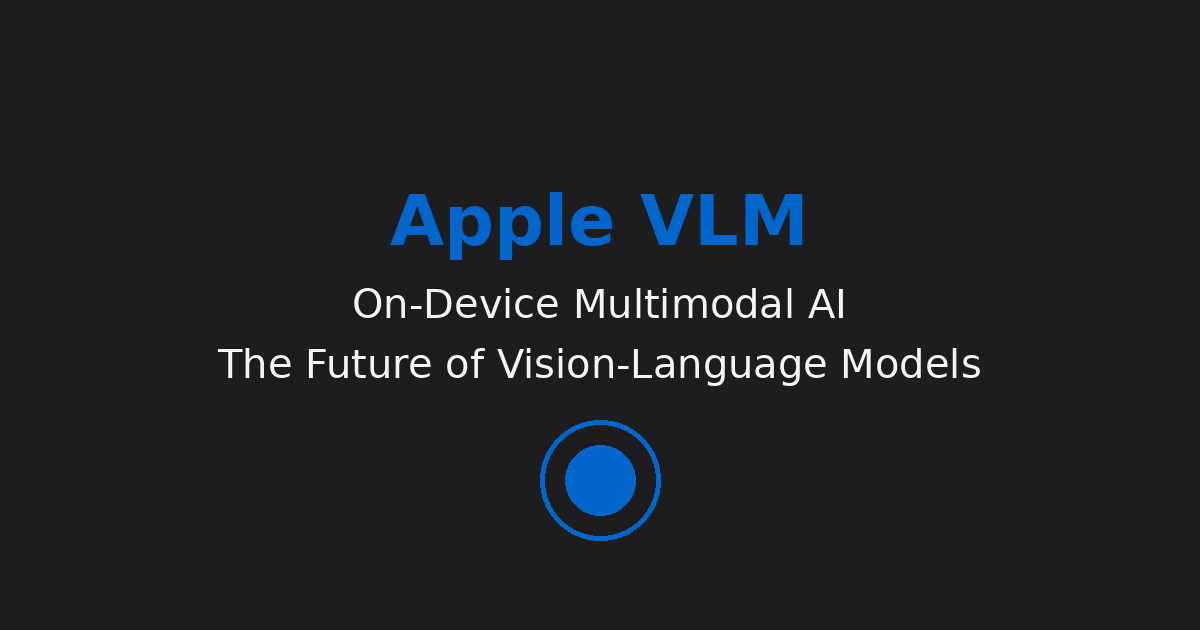ConTalk: Apple's On-Device VLM: The Future of Multimodal AI

When we think about the future of artificial intelligence, we often imagine systems that can think like humans—not just processing text, but understanding images, video, and even the physical properties of the world around us. This isn’t science fiction anymore. Vision-Language Models (VLMs) represent a critical step toward AI that can truly understand our multimodal world.
Today’s large language models are impressive, but they’re fundamentally limited by their text-only nature. They can describe what a sunset looks like, but they’ve never actually seen one. They can explain physics equations but can’t observe physical phenomena directly. This is why VLMs are so important—they bridge the gap between abstract text and the visual, physical world we inhabit.
Why Vision-Language Models Matter
The progression is clear: AI started with text, mastered conversation, and now needs to understand the world through multiple modalities. Just as humans learn by seeing, hearing, and experiencing—not just by reading—AI systems need multimodal understanding to become truly intelligent assistants.
Think about it: when you ask a question about an image on your phone, you want instant answers without uploading that image to the cloud. When you’re navigating an unfamiliar city or trying to identify a plant species, you need AI that can process visual information right there on your device, respecting your privacy and working offline.
This is where on-device VLMs become game-changing. They bring powerful multimodal AI to the edge—directly on your iPhone or Mac—without compromising privacy or requiring constant internet connectivity.
Benchmarking Apple’s VLM Implementation
Can Apple’s on-device Vision-Language Model deliver true multimodal AI without the cloud? I ran a series of practical experiments to find out.
In the video above, I test Apple’s quantized, fine-tuned version of Qwen running on Apple Silicon across various real-world scenarios:
- Q&A accuracy and reliability - How well does it understand and respond to questions about images?
- Prompt sensitivity - Does it handle different question styles and formats gracefully?
- Multilingual support - Can it process text and visual tasks across languages?
- Cross-device performance - How does it perform on M1, M2, and M3 chips?
- Resource usage - What’s the impact on battery life and system performance?
The results show both impressive capabilities and clear limitations—giving builders an unfiltered view of what works and what doesn’t when deploying multimodal AI at the edge.
The Technology Stack
The implementation uses:
- iOS & macOS on Apple Silicon (M1, M2, M3)
- Apple’s quantized VLM based on Qwen
- Xcode & Swift for native integration
- On-device cameras and local compute only
No cloud dependencies. No data uploads. Everything runs locally on your device.
Looking Forward
As AI continues to evolve, the systems that can seamlessly integrate text, vision, and eventually physics understanding will be the ones that feel truly intelligent. VLMs are a crucial stepping stone on this path—they’re teaching AI to “see” the world, not just read about it.
Apple’s approach of bringing these models on-device is particularly important for practical deployment. Privacy, speed, and offline capability aren’t just nice-to-have features—they’re essential for AI that can be integrated into our daily lives.
The experiments in this video are just the beginning. As these models improve and hardware becomes more capable, we’ll see on-device multimodal AI become as commonplace as smartphone cameras are today. The question isn’t whether this future will arrive, but how quickly we can build the infrastructure to support it.
 Want to work with me? Send me an email.
Want to work with me? Send me an email.